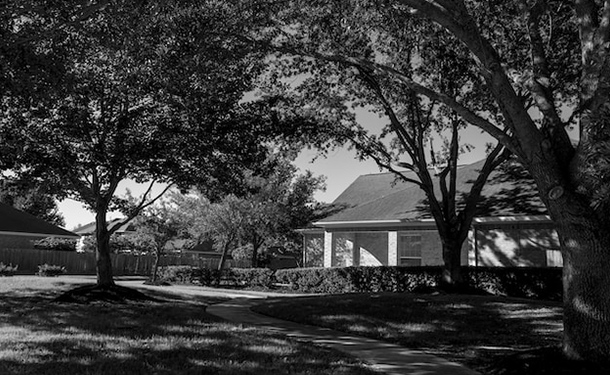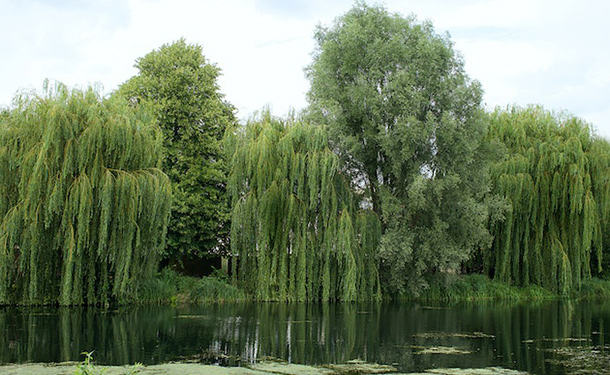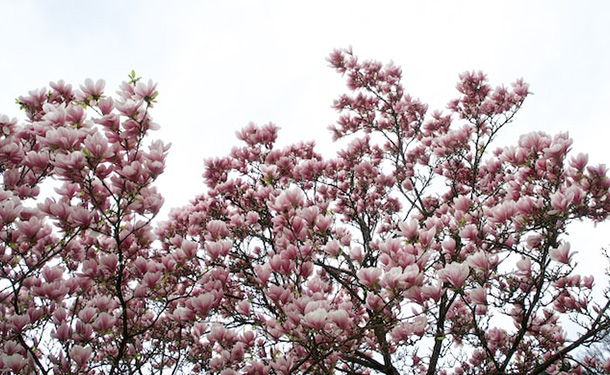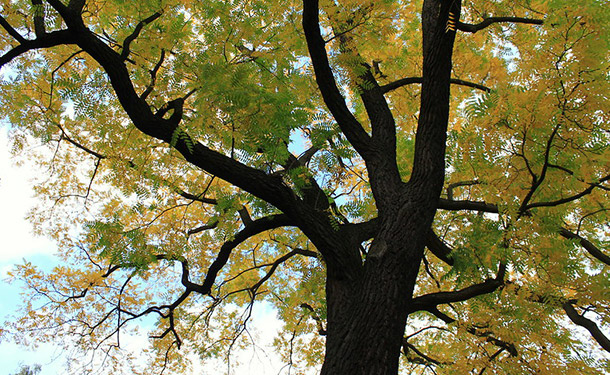Need help choosing a massive tree species for your large landscape? Knowing which tree species grow to larger proportions will help you fill vast areas of your landscape with shaded recreational areas.

thetreecareguide.com gathered species, planting, and care information for some of the more massive trees hardy to large zone 7 landscapes.
1. Weeping Willow (Salix babylonica)

Weeping willows are recognized for their long, drooping branches and delicate leaves. They are typically found near fresh-water sources, as they have a strong affinity for moisture and thrive in damp soil. The weeping willow’s growth rate is fast, with new growth appearing each year. They can reach a mature size of 40 to 50 feet in height and spread, with a broad canopy that provides significant shade.
Weeping willows are hardy in USDA zones 6 through 8 and are easy to care for. They require consistent moisture to thrive, so they should be watered regularly. This tree species benefits from fertilization in the spring and pruning in the winter to maintain shape and encourage healthy growth. The weeping willow is a stunning addition to any large landscape and offer a peaceful, calming presence with their gentle sway in the breeze.
2. Ginkgo Biloba (Ginkgo biloba)
Ginkgo Biloba trees or Maidenhair trees are a unique and ancient species that can live for over a thousand years. They are easily recognized by their fan-shaped leaves turning bright yellow in the fall. These trees have a moderate growth rate and can reach a mature size of 80 feet high and a 50-foot spread. They are hardy in USDA zones 3 through 8 and are tolerant of various soil types as long as they are well-drained.
Ginkgo Biloba trees require minimal care and maintenance, ideal for low-maintenance landscapes. They prefer full sun to partial shade and should be watered regularly. They do not require fertilization, but occasional pruning will help maintain their shape and promote healthy growth. Ginkgo Biloba trees are prized for their medicinal properties (the foliage is believed to have beneficial effects on memory and cognition).
3. American Beech (Fagus grandifolia)
American Beech trees are a beautiful and stately deciduous species native to eastern North America. They have a slow to moderate growth rate and can reach a mature size of 70 to 80 feet in height and spread. They are hardy in USDA zones 3 through 9 and prefer well-drained soil rich in organic matter.
Beech trees need minimal care and maintenance once established. They prefer partial shade to full sun and should be watered regularly. They thrive from an annual compost application around the tree’s base. Pruning is typically only necessary to remove dead or diseased branches. Beech trees are highly valued for their attractive foliage, which turns a golden brown in the fall. They are also an important food source for birds and small mammals.
4. Southern Magnolia (Magnolia grandiflora)

Magnolia Grandiflora trees or Bull Bay are a stunning evergreen species native to the southeastern United States. They are known for their immense, fragrant white flowers blooming in the summer and their glossy, leathery leaves remaining green year-round. They have a moderate growth rate and can reach 60 to 80 feet in height and spread at maturity. They are hardy in USDA zones 7 through 9 and prefer well-drained soil rich in organic matter.
Magnolia Grandiflora trees require minimal care and maintenance once established. They prefer full sun to partial shade and should be watered regularly. They do not require fertilization, but occasional pruning will help maintain their shape and promote healthy new growth. Magnolia Grandiflora trees are highly valued for their ornamental beauty and are often used as specimen trees in landscaping.
5. Black Walnut (Juglans nigra)

Black walnut trees, or Juglans nigra, are a large and long-lived species native to eastern North America. They are known for their valuable wood and edible nuts, which have a distinctly rich buttery flavor. They have a moderate to fast growth rate and can reach 70 to 100 feet with a 50 to 75-foot spread at maturity. They are hardy in USDA zones 4 through 9 and prefer well-drained, moderately fertile soil.
Black walnut trees require minimal care and maintenance once established. This tree species prefers full sun to partial shade and should be watered regularly. They benefit from an annual compost or organic fertilizer application around the tree’s base. Pruning is typically only necessary for dead or diseased branch removal. Black walnut trees are highly valued for their wood, used for furniture, flooring, and other applications.
Large Trees for Vast Landscapes
In this article, you discovered species, growing, and care information for some of Zone 7’s largest tree varieties for your vast, empty landscape.
Identifying larger trees to help you add dimension and interest to your landscape will give you more shaded areas and potentially increase your home’s curb appeal.
Without larger trees in your landscape, you will have excess barren areas unprotected from the sun’s harsh rays and violent weather.
Sources:
trees.umn.edu/weeping-willow-salix-alba
snr.unl.edu/data/trees/identification/basictree.aspx?sid=65
uky.edu/hort/American-Beech
plants.ces.ncsu.edu/plants/magnolia-grandiflora/
nfs.unl.edu/woody-plants/black-walnut